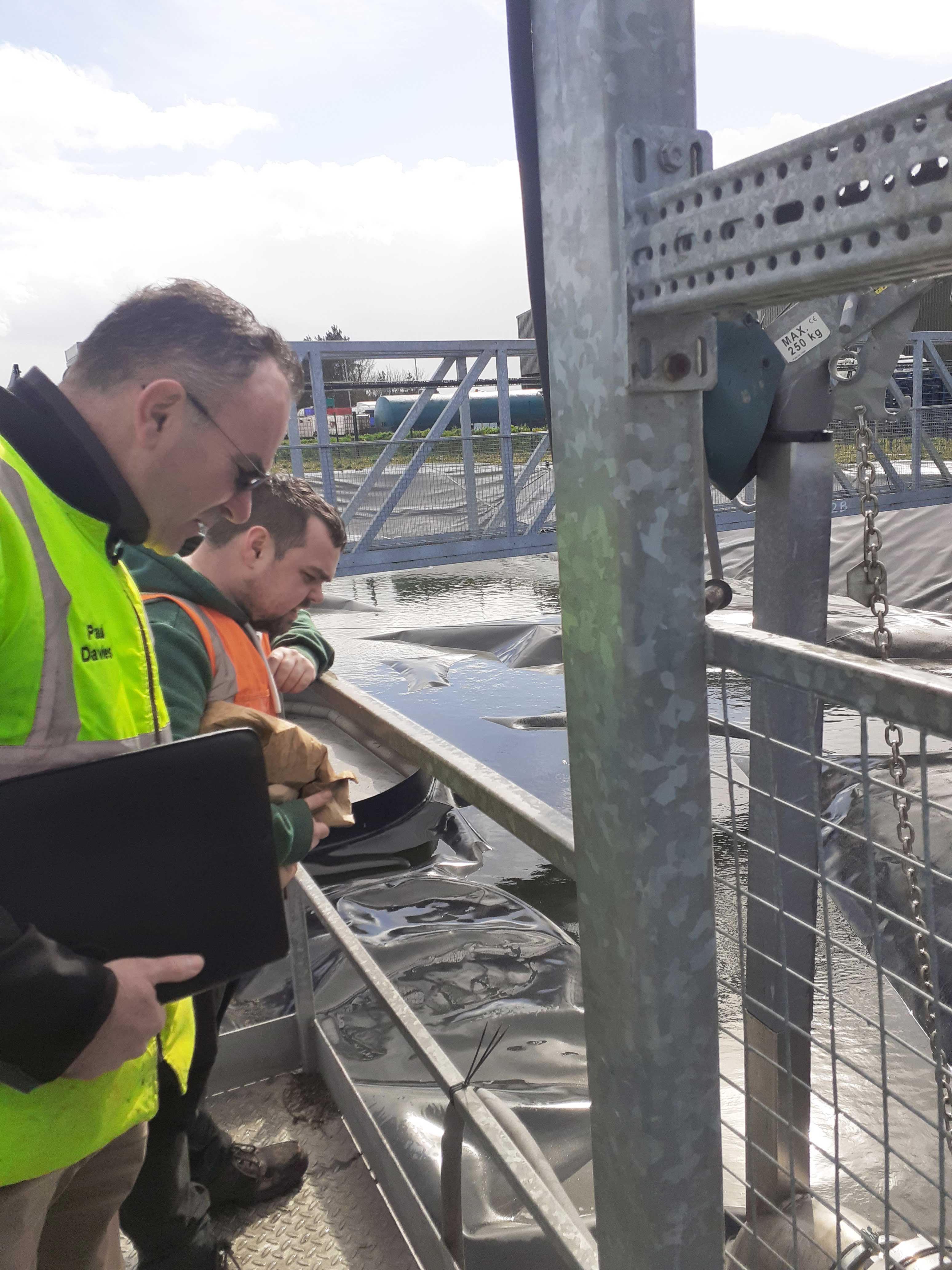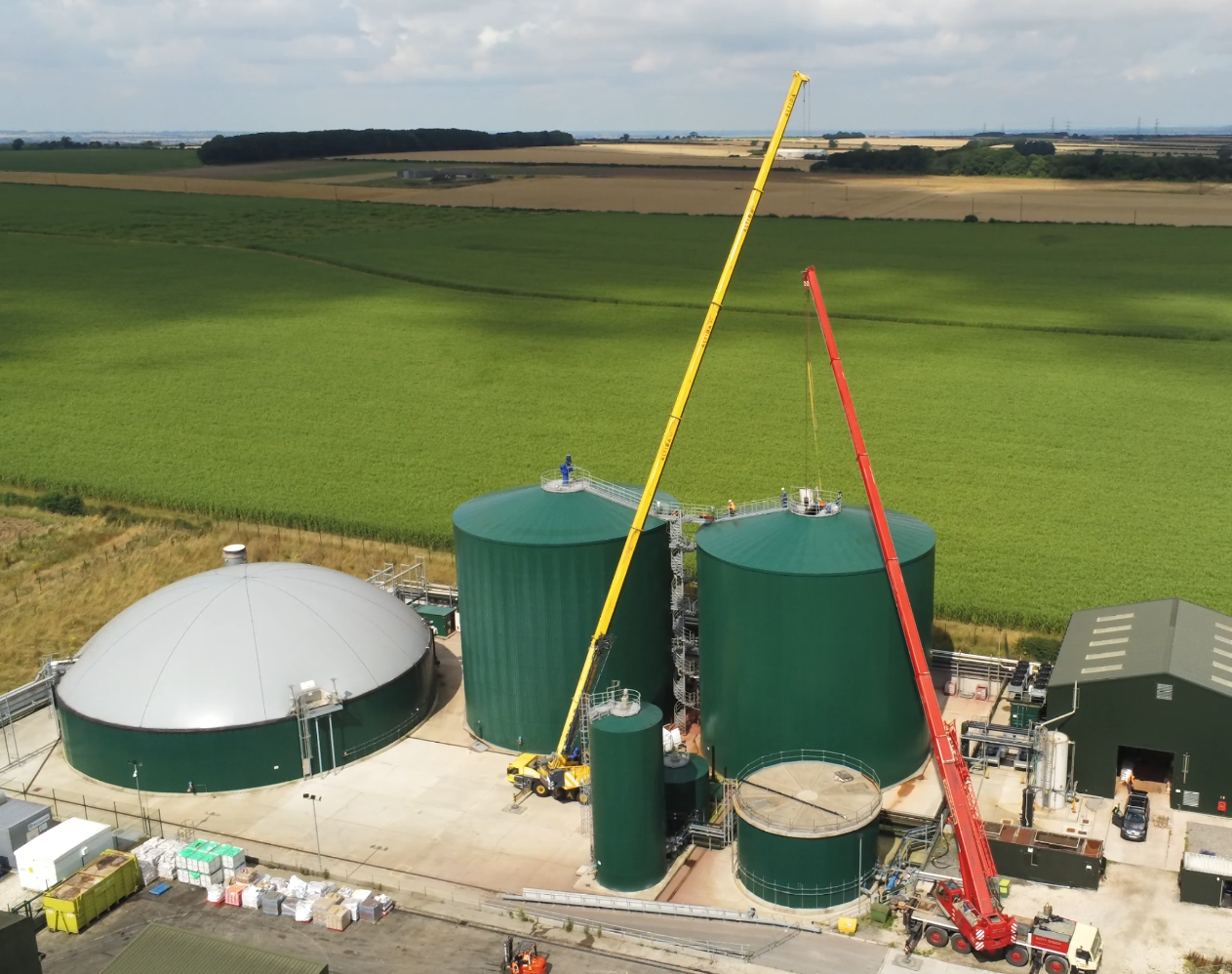Author
Chris French
Category
Wastewater, Biogas
Published
May 22, 2023
Contents
“The difference between the Then and Now in the operation at Brigg Lane is like night and day, with a biogas plant that through our operational expertise and experience is running so much better."
- Chris Waters, Operations Director for Eco Verde Energy
www.ecoverde.energy
Online, one can find no end of advice on mixing systems for biogas digesters; often going into great detail about impeller designs, speeds and angles – but away from the office desk, speak to a Plant Manager or AD operator, and they’ll soon tell you that even the best mixing system in the world isn’t something that they want – inside the tank.
Yet around 15 years ago when the UK was falling over itself in the rush to create seemingly ‘easy’, lucrative biogas, and funding was often only possible for what was considered ‘proven technology’, numerous Continental-style package plants were invested in lock, stock – and mixers.
As with all equipment types, you get what you pay for. There are some extremely well-designed submersible mixers out there that will provide long-lasting service – but the feedstock in the United Kingdom wasn’t automatically going to consist of manure and maize, so no surprise perhaps, that with lower grade mixers installed during the biogas goldrush, there were going to be some casualties.
A biological process doesn’t take too kindly of course to the huge amount of downtime caused by taking the dome off of a digester to retrieve failed mixers, or ones that simply needed repair. Being offline means weeks of loss-making recovery time for the all-important bugs in the crucial microbial community.
It is unrealistic to think that the new wave of biogas plants wouldn’t require upgrading at some point, but it remains a mystery as to why the risk of such very damaging downtime through wrongly specified mixers was (and sometimes still is) so overlooked.
Even now, you’ll find no shortage of manufacturers wanting to sell you some type of agitator for use inside a tank that may have worked just fine in a different industry, but that just isn’t designed for the demands, for example, of a food waste biogas feedstock.
Given the huge disruption and the cost of a retrofit, some of these original mixing systems plod on, with output not achieving anywhere near like the headline-grabbing promises that were made amid all the excitement of a plant’s opening.
In the now, much more mature UK biogas industry though, replacement of unsuitable mixers is increasingly common, as new operators look to optimise their plants with equipment that is truly designed for purpose. One of the companies that is leading the way is Eco Verde Energy (EVE) (established in 2020), which says it has the vision of being the very best green energy services provider. It now has eight fast-improving sites, which after what could be described as an eventful history, are all now firmly heading in the right direction.
At Brigg Lane on South Humberside in England, Plant Manager, Liam Hughes has been doggedly steering the plant towards optimum efficiency and output.

Straightforward retrofit
– better yields and much easier maintenance
“Solving some of the fundamental design issues of the original package plant isn’t something that can be achieved overnight with a biological process to protect”, he said.
“On one of the tanks, the original Landia mixers were still working very well. Upgrading them to Landia’s externally-mounted GasMix system was a straightforward retrofit that made perfect sense for better yields and much easier maintenance.
On the other tank though, the paddle design top-mounted mixer with its 20-metre shaft was totally inadequate for what we need.
We’re having to continue with it just for now, but at one point it broke, meaning that we had to take the tank off-line. Inside the drained digester there was a large cone-shaped mound of dropped-out solids, that clearly showed that the mixing was inadequate.
The flawed design of the paddle mixer set-up that we inherited also had water leaks, which then set off an alarm to shut down the mixing system.
As AD operators know, these problems have a habit of occurring at the worst possible times (overnight or at weekends), so it could sometimes take two hours to get the liquid moving again, after having lost lots of valuable gas. The old paddle mixer is also a very heavy user of energy, so it will be replaced when the time is right.”
He added: “Biogas yields are very important of course, but with the Landia digester mixing system there is no working at height, which is much safer for our team. Everything is at ground level. None of us are going to miss carrying twenty litres of oil up those staircases!
“We no longer have to worry about the major consequences of downtime from having to empty a tank, which is always the case with mixers that are trapped inside. The engineers from Landia took a lot of pride in the installation, and they haven’t walked away. I can always pick up the phone to Landia to run something by them.”

Facts:
For its two 6,000m3 digesters, EVE’s Brigg Lane Biogas Plant currently receives approximately 140 tonnes per day of blended, de-packaged food waste from its next-door neighbour, Bioganix, who process food and beverage waste for delivery into anaerobic digestion and organic agricultural fertilisers. Dry solids are at around 16-25%, with iron hydroxide dosing in place for retention times of around 90 days for the primary tank and 30 days for the secondary.
Best possible, streamlined operation
Flavio Ascenco, Area Manager for Eco Verde Energy, said: “Liam and his team continue to work hard to iron out the original design issues at Brigg Lane so that we can achieve the best possible, streamlined operation.
“At first, the main reception tank was affected by high levels of H2S, and the CHP that was chosen for the site is oversized, but with our investment, including the Landia digester mixing system, we are on course to bring about greatly improved performance from the plant.”
Eco Verde Energy has also been working with Landia to overcome the challenges of the site’s lagoon, as Plant Manager, Liam Hughes explains:
“Before we took over the site, the need for more storage for separated liquor had become apparent, which typically sees the most cost-effective solution of a lagoon being created. But, at 12,000m3, it was undersized, yet at the same time, it was made too deep. At more than seven meters in depth, it actually comes up against the laws of physics, making it challenging to mix and difficult to extract from.
Landia could have easily argued that this wasn’t their problem, but they’ve done everything they can to help, creating two separate mixing patterns (with four mixers and a pump) to cope with the differing heights of the liquid and ensure that a crust doesn’t form.”
Maximum output
“The difference between the Then and Now in the operation at Brigg Lane is like night and day, with a biogas plant that through our operational expertise and experience is running so much better."
- Chris Waters, Operations Director for Eco Verde Energy
There’s more investment ahead too. We are looking at a new bioscrubber to help better control H2S levels, and the possibility of a new holding tank next to the lagoon.
The first-class equipment and back-up we get from Landia shows them to be the type of supplier we want to work with to help us meet the crucial goal of achieving maximum output for our clients.”

